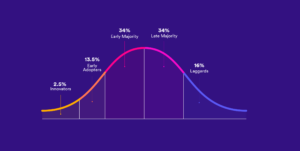Five myths on how to turn an idea into a real business

In my previous blog post, it became clear that the journey to explore new business ideas is not linear and is totally different from managing existing business. In this article, I outline five myths surrounding the innovation journey that can hinder you from turning an idea into a real business.
Myth #1: The most important part of the innovation journey is finding and executing the perfect idea.
Reality: The innovation journey is about turning ideas into value propositions, which matter to customers, and business models, which can scale.
Ideas are easy, but they are just a starting point. The tricky part is to continuously test and adapt ideas that look good in theory, until you finally have enough evidence that they work in practice. The exploration journey is all about iteratively adapting ideas until you find a value proposition that customers really want and a business model that can be profitably scaled up.
Myth #2: When you systematically test ideas, the evidence shows you clearly how to proceed. The solution will magically appear if you test and adapt your idea often enough.
Reality: Innovation and entrepreneurship are about making informed decisions based on incomplete and potentially contradictory evidence. And sometimes it is just wiser to shoot down an idea.
Turning an idea into a real business will always be an art, even with the most rigorous testing processes. It is rare that the evidence sends you in an obvious direction. Evidence allows you to spot patterns and make informed decisions that are less risky than taking the gamble based on opinions. Also, make sure you don’t get stuck in testing or evidence analysis. Based on the available evidence, decide to persevere, adjust (make a ‘pivot’) or abandon an idea.
Myth #3: A small number of big bets leads to high returns.
Reality: Exploration requires you to make a large number of bets (‘bets’), which you gradually reduce over time, based on evidence.
In the early stages of innovation, you cannot possibly know which ideas work and which do not. Start by investing small amounts of money and time in a large number of ideas and projects. For ideas and projects that provide real evidence, make follow-on investments. If you do this systematically, in several rounds, the best ideas and teams will come up with the most promising returns.
Myth #4: The skills required to research new businesses and manage an existing one are fairly similar. Business is business.
Reality: Exploration and exploitation are two completely different professions that require a different set of skills and different experiences.
Testing and adapting a business idea until it works requires totally different skills than managing a business. In innovation and entrepreneurship, you have to deal with uncertainty. You have to discover patterns in the data you collect with testing and transform it into something you can profitably scale up. You get better at exploration the more experience you have, just as you get better at management over time.
Myth #5: Innovation teams are turncoats or pirates bent on disrupting the old business. They have to operate covertly to survive within the organisation.
Reality: Innovators should be seen as partners essential to the company’s future. If not, any meaningful innovation is unlikely to materialise on a large scale.
Innovation teams that are seen as turncoats have limited access to corporate resources, such as access to clients, brand, prototyping, et cetera. To operate successfully, they need to be seen as partners with the mandate to create the future of the company.
Hopefully, I have dispelled some myths with this blog post. In my next article, I will be happy to tell you more about innovation and starting new businesses. I will then write about managing an innovation portfolio, including some practical examples. See you then! 🙂
Source: The Invincible Company





